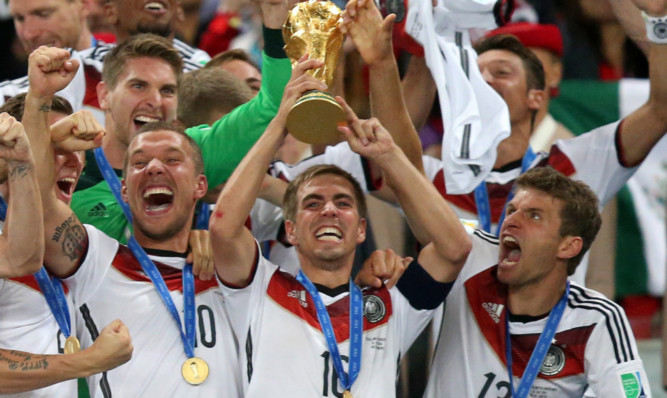
The aftermath of any World Cup is a good time for reflection.
What state is football in? Where is it headed? What does it all mean for the home nations?
These questions are tough to answer, but in the weeks immediately after the footballing world’s four-yearly meeting, they seem a wee bit easier to speculate upon.
And for me, the most obvious thing to have emerged from this World Cup is that Germany look capable of dominating the game well into the next decade.
By taking the time to craft a young, dynamic and, above all, technically-gifted team over the last eight years and contributing to its development for two more as assistant to Jurgen Klinsmann Joachim Low has set the Germans up as the heirs to Spain’s crown as Kings of the World.
If you watched Low’s side destroy Brazil in the semi-final before patiently picking off Argentina in the Final, I don’t see how you could draw any other conclusion.
This generation of German players, like the greats who have come before them, has physical strength and mental discipline at its core. But that’s not all.
By weaving those characteristics into a more direct form of Spain’s technically-focused game, Low’s players have set a whole new standard.
And given their relative youth, I think their reign at the very top of world football could last even longer than Spain’s.
Isn’t it just typical, then, that Scotland will be the first team to face the new world champions in a competitive game post-Brazil?
In terms of setting the tone for his team’s Euro 2016 qualifying campaign, Gordon Strachan could hardly have imagined a tougher opener.
But despite Germany’s undoubted ability, I reckon this is the PERFECT time for Scotland to face the World Champions.
The national team’s development since Strachan took over from Craig Levein as boss has been clear to see.
Where the Scots used to be wary, now they are bold. Where they used to hope to soak up pressure, now they look to apply it.
To put it simply, Strachan has got Scotland’s players playing to their strengths and even against the mighty Germany, that’s got to be better than simply praying we don’t concede.
England, on the other hand, still seem to be lacking the sense of direction that Scotland have found recently. And that will be a huge concern after such a disappointing World Cup campaign.
We’ve all heard the arguments about how Roy Hodgson’s side offered a few glimmers of hope for the future. But there is still a long way to go before those glimmers turn into anything approaching glory.
After crashing out in the group stages of Euro 2004, Germany put a plan into action to return themselves to football’s top table 10 years later they are World Champions.
That’s the message football should be reflecting on after Brazil 2014. I hope that in another 10 years, it becomes apparent that England and Scotland were paying attention.

Enjoy the convenience of having The Sunday Post delivered as a digital ePaper straight to your smartphone, tablet or computer.
Subscribe for only £5.49 a month and enjoy all the benefits of the printed paper as a digital replica.
Subscribe